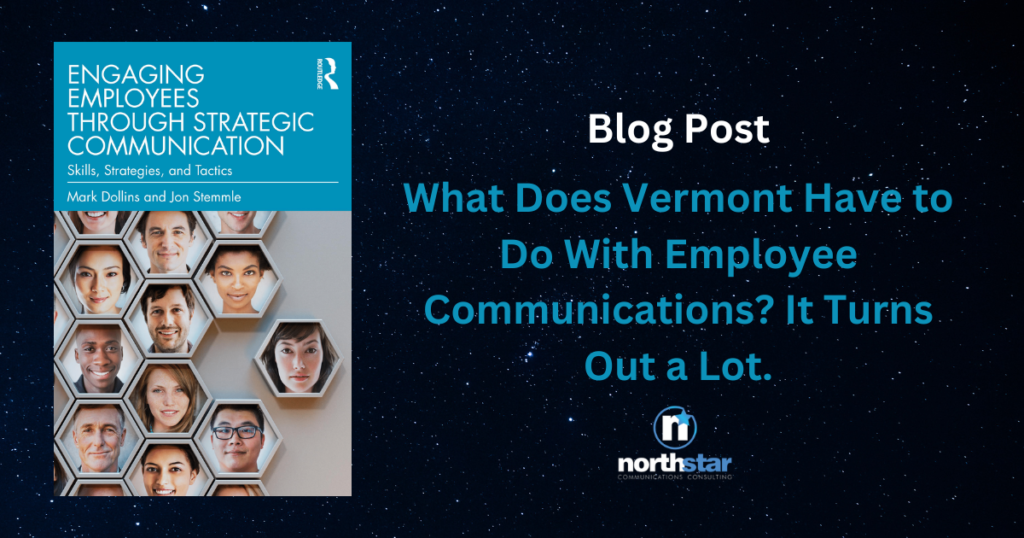info@northstarcomms.com
info@northstarcomms.com

This blog post briefly summarizes chapter one in the book Engaging Employees Through Strategic Communication by Mark Dollins and Jon Stemmle. Visit engage-employees.com to grab your copy today.
Employee communicators, here’s your final Jeopardy question: The very first meeting of employee communicators took place in what New England city in 1940? Read on to find the answer!
Today’s employee communicators are far more than publication editors or video producers. They are messaging strategists, cultural envoys and technology experts. They are research and analytics practitioners, segmentation gurus and consummate storytellers. The art and science of communication, more than ever, have converged on arguably one of the most complex communication disciplines in the business world.
But the journey that brought us here makes what we do today even more special. Relatively little has been chronicled about the origins of this discipline, but what has been recorded largely says that organizations used tactical methods, namely publishing newsletters and magazines, to tell employees what leaders wanted them to know until the late 19th century. Sure, those even before the time of the ancient Egyptians likely gave clear communications on what needed to done to laborers, but it really wasn’t until the Industrial Revolution, when people started being employed by formal industries, like the textile mills of England, that organizations had to start thinking about how to engage workers in the tasks of the day beyond simply being paid.
The early history is a tale staged on two continents, one written in Great Britain and the other in the United States. That’s not to say that other countries on other continents didn’t practice employee communications until more recently, but rather these were the places that drove industrial growth during those early periods, meaning they had more of an organized need for the type of communications we’re talking about. Each contributed something unique and important to the early days of employee engagement and created the first touchpoints that led us to where we stand today.
Initial efforts to inform employees through communications we’d recognize today began in the mid-1800s. According to research from British public relations professionals Kevin Ruck and Heather Yaxley that traced the history of the discipline, the first formal employee publications date back to 1840, and were written by employees for employees. Journalists of the time were hired as “industrial editors.” For many decades, internal newsletters and magazines, also known as house organs, were the dominant, if not sole, way to tell employees what the company wanted them to know. Although a simplistic approach compared to what’s involved with employee communications today, it is representative of most organizations’ efforts to inform through top-down methods.
About 100 years after employee communications began in the United Kingdom, the field received its first official notice in the United States. A book by Alexander Heron, published in 1942, mentions a small but important first-ever meeting took place in 1940 in Burlington, Vermont, where fewer than 150 self-described “industry relations specialists” met to talk about employee communications. Heron’s book, Sharing Information with Employees, became the first book of its kind on employee communication. This groundbreaking text by the Stanford University associate professor, took into account both societal and cultural influences on employees and companies.
To say that nothing changed with employee communications between the 1940s and the turn of the century would be misleading, if not altogether false. The advent of audio and video technologies, for example, certainly gave employee communicators new tools with which to tell stories, inspire and perhaps even persuade workers. Photojournalism evolved to serve as a tool for organizational storytelling. Best practices for contemporary forms of journalism also migrated from the pages of USA Today into internal company magazines, newspapers and newsletters. The need for measurement of employee communications, in its early forms, also emerged. Auditing of communication channels — assessing their reach, impact and efficacy, began giving communicators data with which to make actionable decisions about where to invest their resources. The idea of collecting insights from employees through focus groups and surveys began to inform internal communication strategies. And the practice of better equipping C-suite executives with more impactful messaging through new internal channels emerged as a more strategic tool.
The diagram above shows the different topics covered in the book. Take advantage of the opportunity to enhance your organizational communication strategy and engage your employees effectively by getting your hands on the highly recommended book, Engaging Employees Through Strategic Communication by Mark Dollins and Jon Stemmle. Piqued your curiosity? Want to know why change communications, Block Chain, Artificial Intelligence, and employee activism will shape our near-term future? Visit engage-employees.com to grab your copy today.
If you’re looking for expert guidance in implementing change communications, talent development, and coaching in your organization, look no further than North Star Communications Consulting. Contact us today to schedule a free consultation and take the first step toward transforming your organizational communication approach.

Monday to Friday
8:00 AM – 5:00 PM
Curabitur non nulla sit amet nisl tempus convallis quis ac lectus.